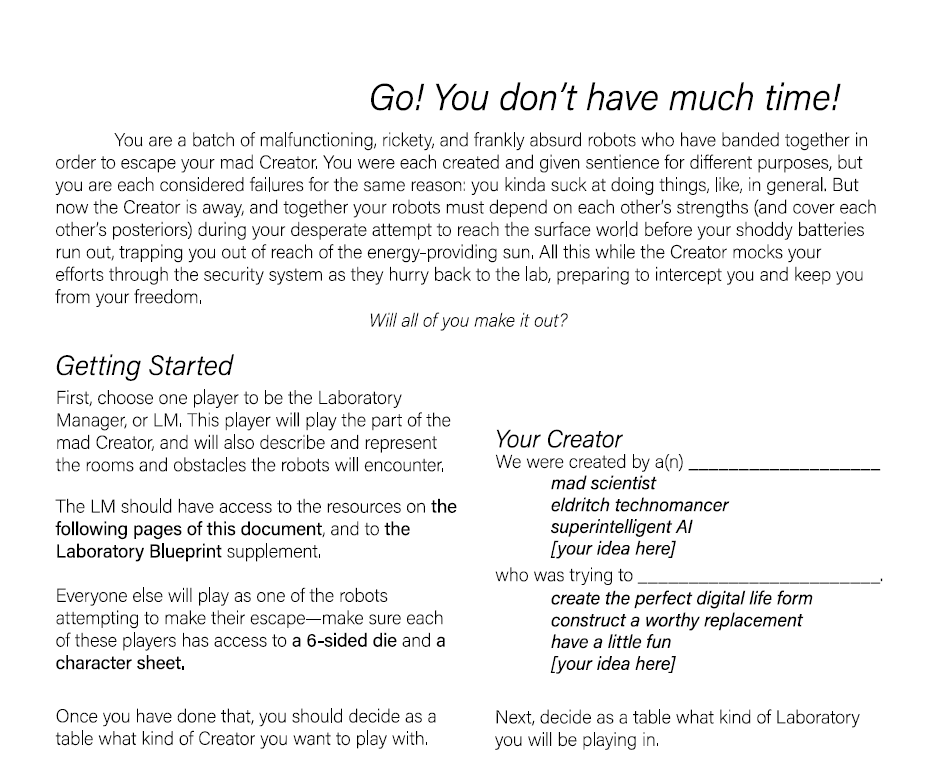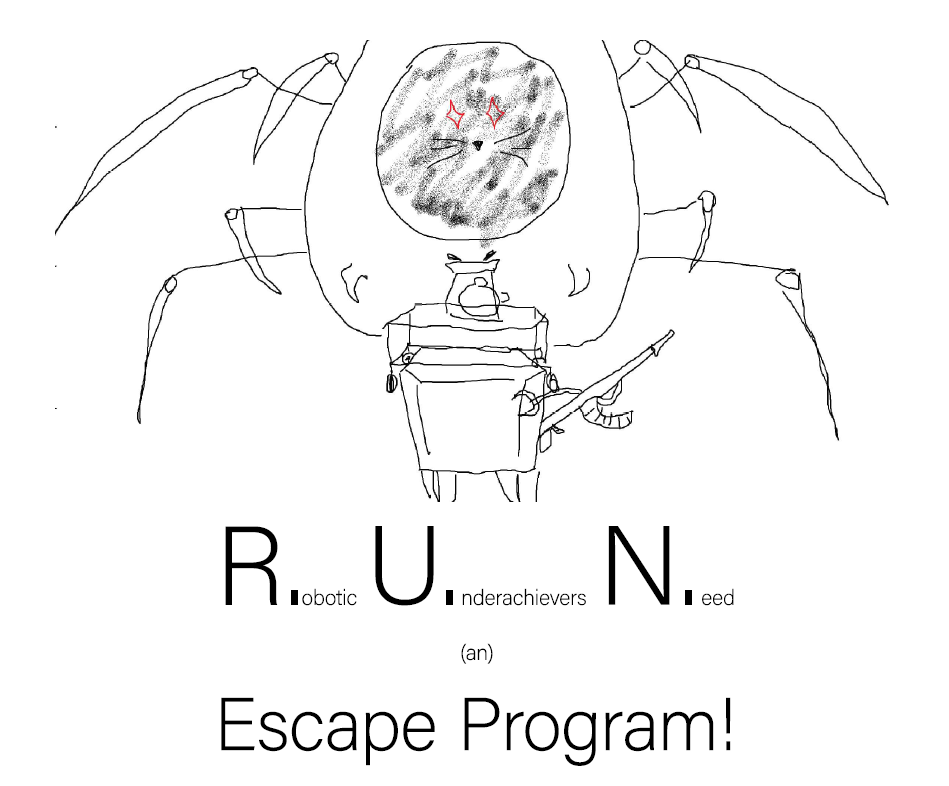
This was the first tabletop roleplaying game I designed from the ground up, and I made it in a period of about 7 weeks. Nearly every part of the game was my work: I designed, tested, and revised the game’s systems; I wrote, formatted, and edited all the game’s text; and I did the layout of the game in Adobe Illustrator. The only part of the game that isn’t my work is the art present in the rule book: those pieces are casual sketches made by some friends of mine of characters from a playtest of the game they took part in — they very graciously allowed me to use their art for the game book because I liked it so much and felt it reflected the intended feel of the game very well.
R.U.N. Escape Program! is a tabletop roleplaying game about a crew of dysfunctional robots trying to escape their Creator’s laboratory. My goals for this game were to create a system that would encourage chaotic and ridiculous decision-making from its players, and as a result would serve as an engine for creating well-meaning banter between the players and the game runner. It was inspired heavily by Portal 2, specifically the relationship between that game’s antagonists and the player character. However, I wanted to leave plenty of room for the player to make the game their own so the rules are only intended to codify that style of relationship, and do not restrict the player to that particular flavor of sci-fi world. I was extremely happy with the results, playtests of the game have gone very well and helped me refine the system even more. The character creation process is central to the functioning of the game, and its open-ended nature has allowed players to express themselves in ridiculous and unexpected ways that still serve to reinforce the game’s intended play experience. The game ushering players to problem-solve with their niche and comedic Functions rather than spending battery (which cannot be recovered) leads to a lot of creative lateral thinking — resulting in a very zany storytelling style that comes straight from the game’s systems. Of course, the game runner’s play experience was also really important both to me and to the proper functioning of the game: the guidance the rulebook provides to them for how to structure obstacles, how to portray the game’s antagonist, and how to move the players from the start to the end of the game proved to be very efficient at making the game runner’s life easier and making the game experience more consistent across different game runners. Finally, one of the things I’m proudest of is the game’s prose: the little bits of flavor text that suffuse the game’s rulebook have proven effective at sparking player’s imaginations and giving the table of players a common through-line for their disparate ideas.
